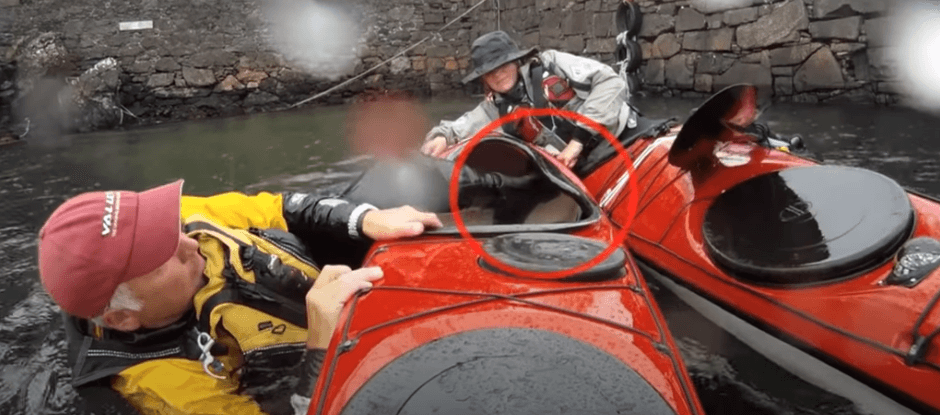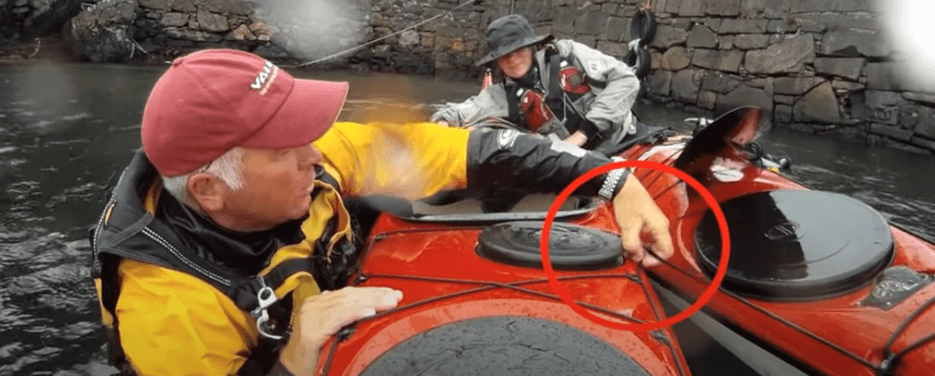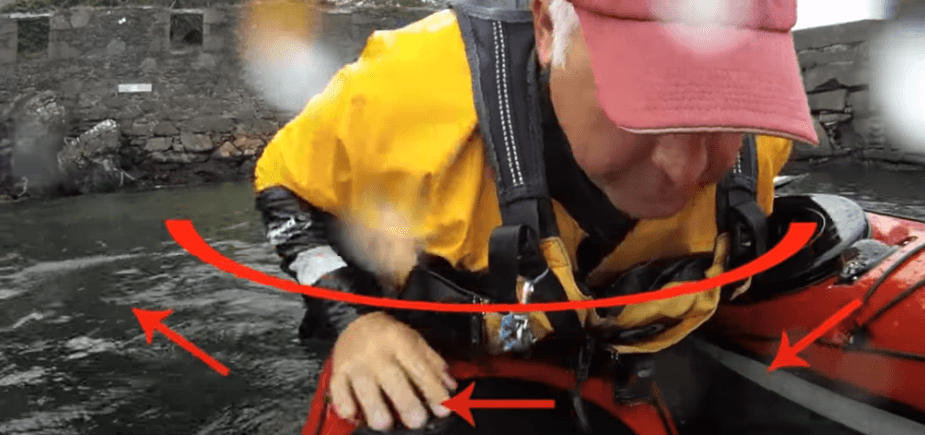Heel Hook Kayak Assisted Rescue
One of the most important things we have to be able to do is to get back into the kayak. I'm just going to show you a way to do that using the heel hook, a fundamental rescue move worth practicing until it's second nature.
Technique in the Water
So when I'm in the water facing the kayak, I'm going to take my leg at the front of the boat, which is my left one, in this case, and hook it into the cockpit.

My left arm, then, I'm putting across. I'm holding my deck lines or my rescuer's deck lines or them both. The idea for that is to pull the kayaks together.

And then using my leg and my arm to pull myself and lean myself onto the back deck. My other leg goes in and then continuing the twist around, sit up and pop the spraydeck.

The Heel Hook is a fundamental rescue move, worth practicing until it's second nature.
Heel Hook Assisted Rescue Demonstration
Using an excerpt from the Gordon Brown Sea Kayaking Volume 2 DVD, we will demonstrate the heel hook assisted kayak rescue. We'll demonstrate in both calm and choppy conditions. It's worth practicing in both to become efficient.
If you're hooking with your left leg, use the left hand to grasp your deck lines and the rescuer's deck lines. Use hand and heel to pull yourself out of the water and keep the body rotation going as you roll into your kayak.
First, you'll see us demonstrate in calm conditions to clearly show the technique. For the rest of these sessions demonstrated, I will be the rescuer and demonstrate how to assist. Janice, who has been paddling for under two years, is the kayaker who has volunteered to get wet.
Emptying the Kayak
If you just get out of your boat and hold onto your boat, go to the front end of your boat. That's it. What you do is you is just try and hold onto mine. Just hold onto the deck line, just there. Do you want your paddle? Good. I just take my paddle and push it under my elastics here. I then take the boat, hands on, and turn it up the right way. That lets me then slide it onto my boat. And then we've got options now.
One option is I hook my thumb through this deck line here and roll the boat into the crook of my arm and that lifts it up. Then turn it up the right way. Another option is I've got it here. I turn it upside down on my boat, and then I edge my boat away and using the extra height of this boat out of the water now, it lifts the cockpit clear. I can then spin the boat back up the right way. When doing so, I turn the kayaks bow to stern.
Assisting the Swimmer
I put it into the water and it goes under my armpit. I then bring it up to beyond where Janice is, let her come on the outside of the boat. Then hold onto the deck lines - grab your paddle, please - holding onto the deck lines, lying across the boat with my armpit on the center line of the boat, pulling my knees towards my chest.
Just hook your left leg in, Janice. And then roll up onto the back deck, other leg in and spraydeck on and we can be on our way.
Common Mistakes
In Janice's early attempts, we see several common mistakes. She correctly faces the rescuer's kayak, but she reaches for the deck lines before she does the leg hook and she's reaching with the wrong hand first. As a result, she can just reach as far as her cockpit rim rather than her deck lines and rescuer's deck lines. And her leg isn't securely hooked when she starts to pull herself out. What's more, on this attempt, Janice stops part way through her rolling motion and twists back on herself. She gets into the kayak, but it's not the best method.
On her later attempt, Janice continues the action of rotating into her kayak, and the entry is much smoother and more balanced. As you can see, it is worth studying the heel hook technique and then practicing on water until you can perform smoothly.
Related Articles
Even though they are flipping over, missing their gates and failing their maneuvers, they still look…
Last month we discussed how to detect and patch (not "repair") a leak on a typical roto-molded kayak…
A kayaker should have a number of recovery methods to choose from in their bag of skills. I feel the…
It is always good to have a few different ways to perform a capsize recovery. The main solo recovery…

